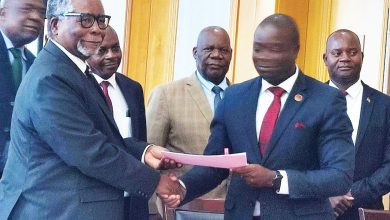Beyond tree planting

The Department of Forestry says Malawi needs to plant about 125 million trees each year at a survival rate of 100 percent if trees that have been cut are to be replaced.
Currently, Malawi plants an average of 55 million trees a year and the survival rate is estimated to be at 60 percent.
According to deputy director of forestry, Nyuma Mughogho, this means that the number of trees being cut in Malawi is more than those being planted.
Mughogho’s argument is in line with the 2013 MDG Report which showed that deforestation is occurring at an alarming rate due to worsening encroachment and a tendency to give away forest land for investment purposes.
Although the emerging mining industry is partly to blame, it is mostly encroachment that is the biggest factor in the country’s high deforestation rate. Mughogho says charcoal burning and expansion of land for agriculture remains the main activity that is causing deforestation.
“The underlying cause of charcoal production is lack of alternative sources of energy. As long as there is no reliable, affordable and readily available source of energy, charcoal will still be produced,” she said.
A 2008 National Statistical Office (NSO) report indicates that about 90 percent of Malawi’s population use wood for fuel and charcoal production, accounting for about 88.5 percent of the country’s energy requirements; 6.4 percent comes from petroleum, 2.8 percent from electricity and 2.4 percent from coal. For cooking, 88 percent of the population use firewood, eight percent use charcoal, two percent use electricity, one percent use paraffin and one percent use other means such as crop residues and animal dung.
Thus, even if Malawi can plant 125 million trees a year at a survival rate of 100 percent, until the problem of energy is solved, charcoal production will continue to wedge war on the country’s forests.
To reverse the situation, government has embarked on a number of programmes to improve the standard of living for the rural masses which is expected to result in energy utilisation switch. For instance, in 2004, government came up with four energy laws to help operations in the energy sector in Malawi. One of it was the famous Rural Electrification Act which laid the foundation for the formation of the Malawi Rural Electrification Programme (Marep).
According to principal secretary for Ministry of Energy Winford Masanjala, the purpose of Marep is to increase access to electricity for the rural and peri-urban communities with the objective of transforming the rural economies and reducing poverty among the rural masses.
Through the public-private partnership (PPP) framework, the programme focuses on ensuring that the power will be used for productive economic activities in addition to providing power at the household level. Studies have indicated that rural electrification significantly impacts the poor by raising household incomes by almost 50 percent.
Under the programme, currently at Phase 7, some progress has been made. For instance, under Marep 6, government electrified 54 trading centres. Under the Marep Phase 7, which President Joyce Banda launched last week, government has expanded the coverage to 81 trading centres.
However, despite strides in Marep, figures still show that only about one percent of the rural population has access to electricity.
Hence, more Malawians in the rural areas—who make up 89 percent of the country’s population—still use fuel wood and charcoal for energy. Clearly, Marep alone cannot solve the energy challenge facing Malawi—the challenge which is leading into deforestation.
The national energy policy is focused on shifting energy use away from the current heavy reliance on traditional biomass to modern sources of energy such as electricity, liquid fuels and renewable sources but little progress has been achieved so far.
Researchers Gregory Gamula, Liu Hui and Wuyuan Peng, in an article Development of Renewable Energy Technologies in Malawi, propose that use on renewable energy technologies could help complement Marep as an energy alternative to charcoal and fuel wood in Malawi.
“In the field of solar, quite high levels of solar energy in the range of 1 200 Watts in the warm months and 900 Watts in the cool months are received in most parts of the country which would enable photovoltaic systems and solar thermal systems to perform well.
“For wind energy systems, there are quite a good number of areas in the country with mean wind speeds above five metres per second almost throughout the year,” they write.
The researchers, however, note that though performance of renewable energy technologies has been quite satisfactory, information dissemination on their capabilities and restrictions has not been fully realised and there are challenges in financing mechanisms.
“The government has put in place some incentives such as removal of import duty on all renewable energy technology components, establishment of necessary framework and built institutional capacity for the sector.
“There is a need for better coordination and dissemination of information about progress being made through establishment of a database on renewable energy delivery in Malawi and constructing a website with document storage and retrieval functionality for sharing of information,” they recommend.





